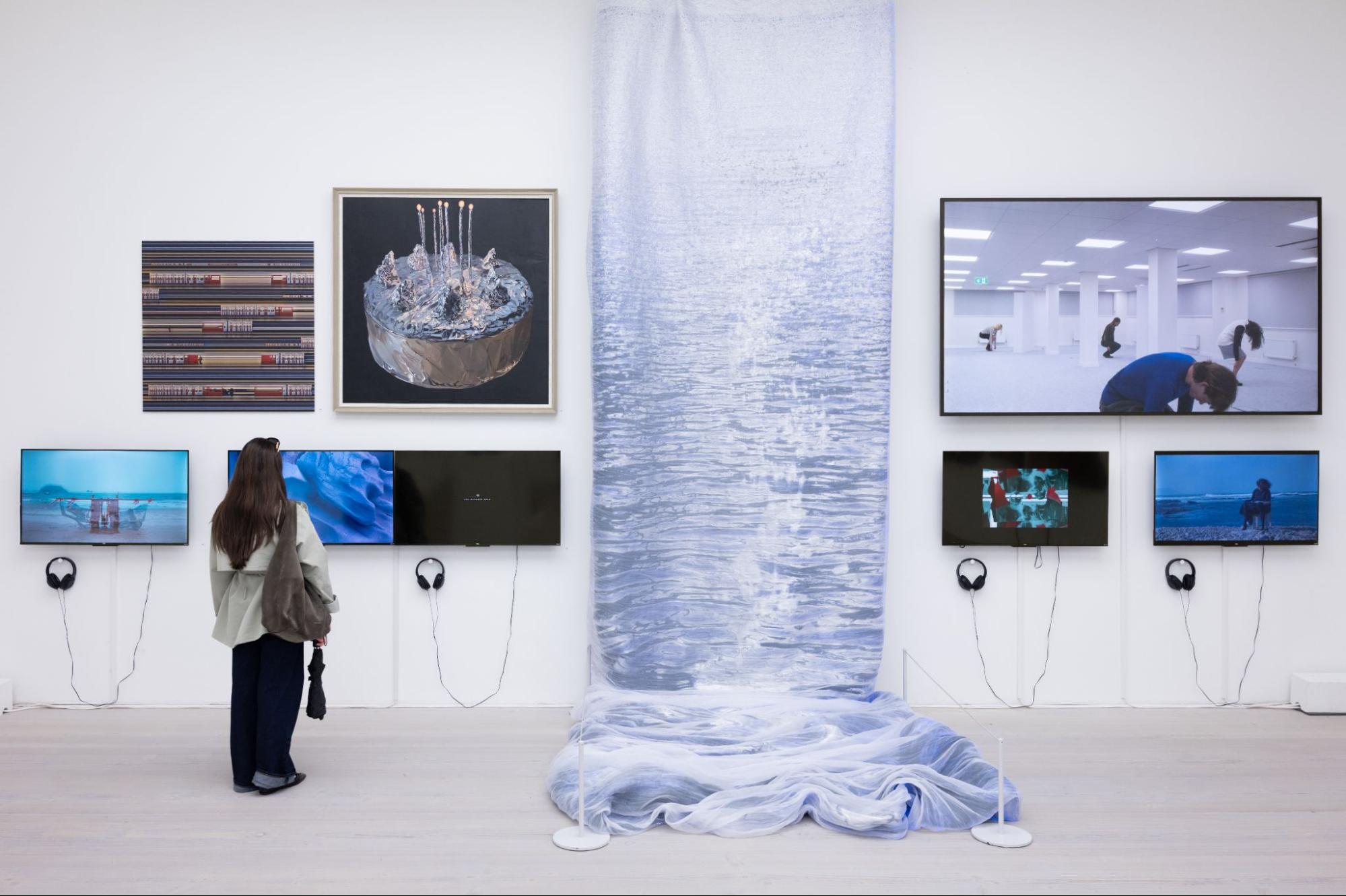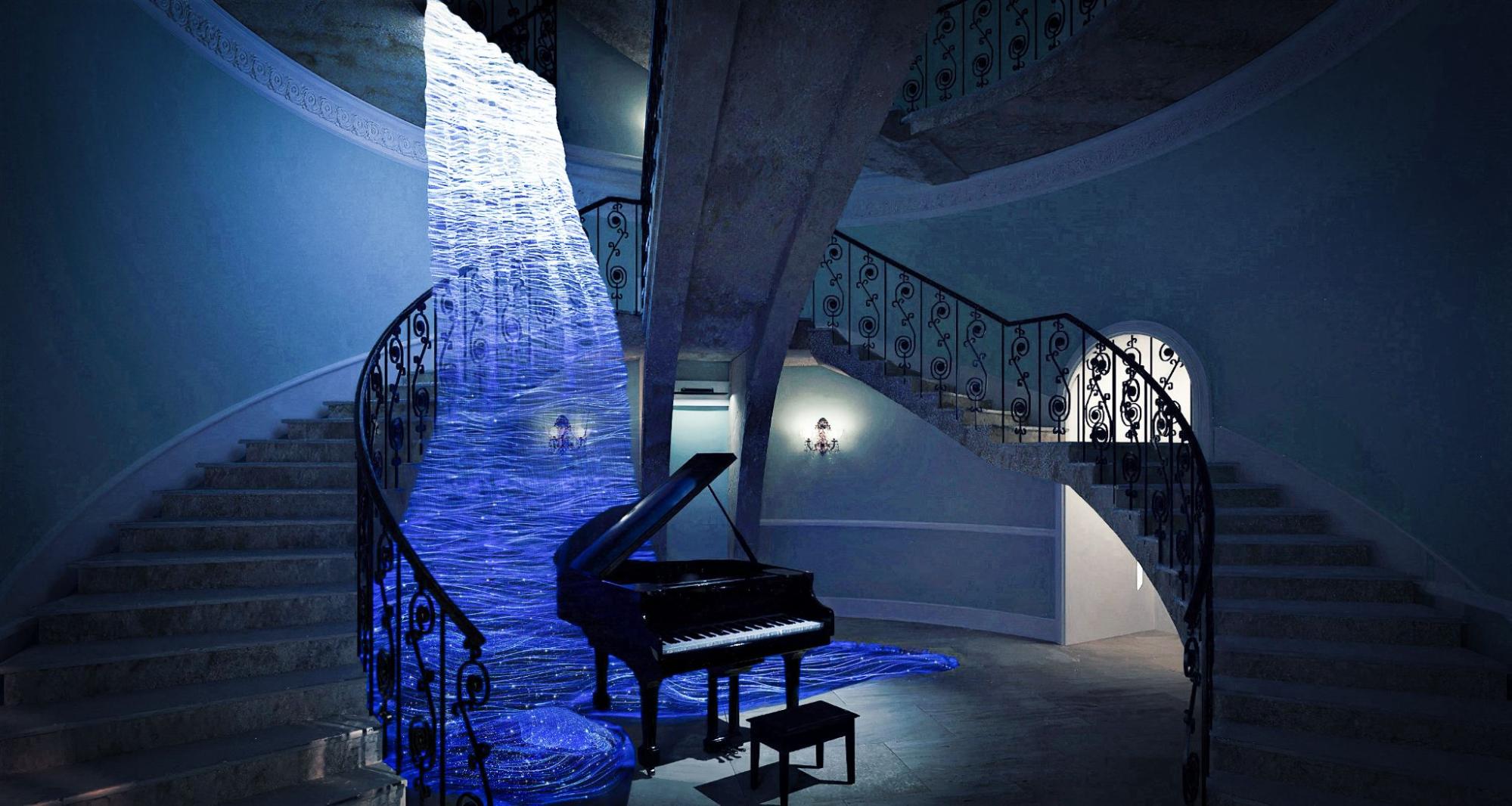I first came across Amelia Peng’s work at the London Design Biennale, where her impressive installation was showcased in the Nelson staircase at Somerset House. The piece, titled Inner Peace, cascaded down five storeys like a waterfall of light. At ten metres long and three metres wide, it’s impressive, but it’s more than just an aesthetic spectacle.
It’s made from fibre-optics, and the installation responds to music, as well as to the brainwaves of those who choose to wear a headset. It pulses with light ot make emotions visible, making what we keep hidden inside ourselves visible to the other visitors. It was a collaboration with specialist modelling group Foster + Partners, neuroscientists, and students from the Royal College of Music. It’s a great example of how different artistic fields can come together to create engaging artworks, serving as a bridge between creative imagination and data science, and enabling the production of realistic visuals.
At Somerset House, the front layer of the textile responded directly to music—sometimes pre-recorded, sometimes played live by musicians from the Royal College of Music, themselves wearing the same brainwave-reading headset. The rear layer transformed the emotional state of participants into patterns of light, and we could see them interacting with one another. Within the confines of the staircase, we could stand under it enthralled for either minutes or hours. We saw other visitors stopping to take it all in, viewing it from different angles along the staircase, clearly entranced by the shimmering installation.
Collaboration is core to Peng’s practice; she rightly says, “It takes courage to collaborate with experts in unfamiliar fields”. It’s this collaboration that allows her work to realise its potential to engage a wider audience and create an arresting artwork. It’s not just a collaboration of creators, as audience participation also makes the work come alive, so we’re all involved – whether directly or as spectators.

Peng is originally from Taipei, Taiwan, and her background helps explain this unique blend of art and technical precision. Before arriving at the Royal College of Art, she spent fifteen years working in global supply chain management and textile design for major fashion houses, as well as conducting research and development projects for international brands. These experiences provided her with an understanding of materials – how they are sourced, engineered, and scaled for production. Artists with a non-arts background often bring their unique experiences to bear in their art, and this is literally woven into her practice.
For many of us, our experience with textiles is limited to the clothes we wear – they protect us from the outside environment and carry the memories of what we’ve experienced while wearing them. We also see this in Peng’s practice, as care, protection, and connection are vital in her work. Inner Peace was conceived as a kind of collective therapy. Created in the aftermath of the pandemic and against a backdrop of global crises, it provides a shelter from the outside world and a moment for us to take a deep breath, standing transfixed as we engage with the artwork. Peng describes it as a “soul-purifying baptism.”
The combination of cutting-edge technology and art enables us to reflect on how we often rush through life without pausing to appreciate the beauty around us, and how we tend to become inward-looking during times of crisis when we should be connecting with others. With so much discussion about how technology can divide us, think of the raging debates around social media; here, it’s being used to bring us together.
You can find out more about Amelia Peng’s practice on her website and Instagram.

